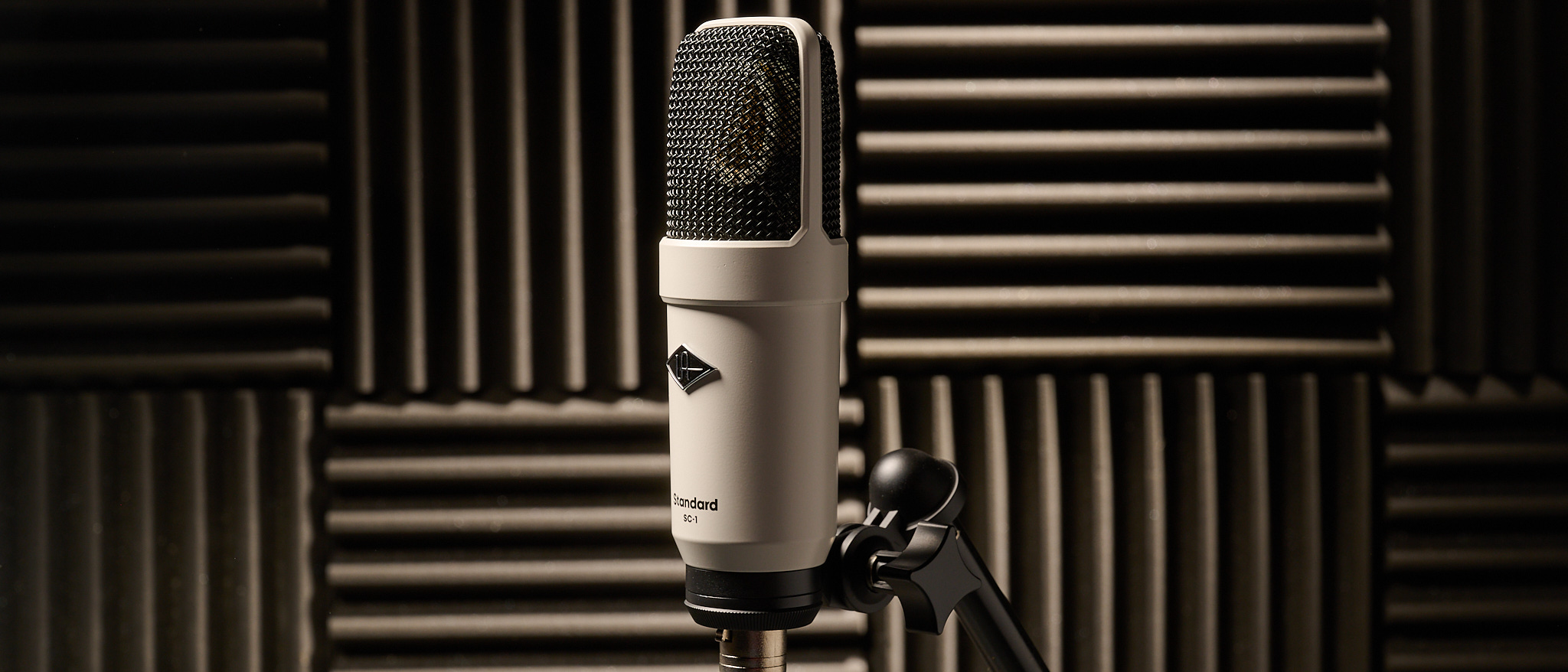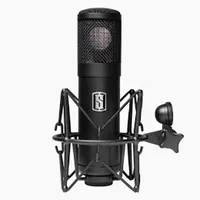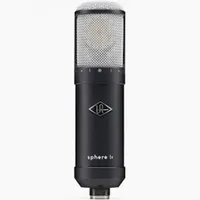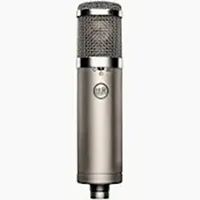MusicRadar Verdict
The Universal Audio SC-1 is a versatile condenser microphone offering classic mic emulations and clear sound. For the price, it’s pretty compelling stuff.
Pros
- +
Versatile sound.
- +
Low self-noise.
- +
Mic modelling.
Cons
- -
No shock mount.
- -
No on-body controls.
- -
Requires a plugin.
MusicRadar's got your back
What is it?
Essentially, the Universal Audio SC-1 is a large-diaphragm condenser microphone designed to grant access to a variety of classic microphone tones from the history of recording through advanced modelling technology. At a basic level, it features a cardioid polar pattern, focusing on sound sources directly in front while minimising ambient noise from the sides and rear, while a frequency response spanning 20Hz to 20kHz ensures the SC-1 captures a wide range of audio details, making it suitable for various recording applications.
One of the standout features of the SC-1 is its integration with Universal Audio's Hemisphere Mic Modeling plugin. This software allows users to emulate the characteristics of eight renowned microphones, including models inspired by the Neumann U87, U67, and U47, the Telefunken ELA M 251, the AKG C12 and C414, the Sony C-800G, and the Neumann TLM 103. These names might not mean much to a beginner, but those of us who’ve been around the block will be positively excited by this. It’s ‘kid in a sweetshop’ stuff. This modelling capability provides users with sonic options, effectively offering multiple microphone sounds in one unit.
Physically, the SC-1 is a tough cookie, with its metal construction ensuring durability for both studio and field use. It has a self-noise level of 12dB(A), making it suitable for capturing subtle nuances in performances without introducing unwanted noise, and the mic can handle sound pressure levels up to 145dB, allowing it to record loud sources like drums and amplified instruments without distortion should you need to, although we’d argue there are better options on the market for that.
The SC-1 is aimed at musicians, recording engineers, and content creators seeking a versatile microphone capable of adapting to various recording scenarios. Its ability to emulate multiple classic microphones makes it particularly valuable in project studios or for individuals who require a broad range of tonal options without investing in multiple high-end microphones. As a result, the SC-1 excels in recording vocals, acoustic instruments, and as a room or overhead microphone for drums, offering flexibility across different genres and applications. But how does it perform in a real-world environment?
Pricing
- Launch price: £399
The SC-1 was first announced at the back end of 2023 alongside UA's Hemisphere modelling software. Since then, the prices have dropped a bit, so you can expect to pick up these up for around £360. Some outlets have been spotted as going as low as £345, so there are some deals to be had.

Performance
In our experience with the Universal Audio SC-1, we found it to be a versatile and reliable microphone that delivers on its promise of providing access to classic microphone tones through modelling technology. Straight out of the box, the SC-1 exhibits a rich and full-bodied sound, capturing speech and vocals with clarity and presence. Its cardioid polar pattern performed admirably at rejecting unwanted noise, making it suitable for various recording environments.
The integration with the Hemisphere Mic Modeling plugin significantly enhances the SC-1's versatility. The plugin's user-friendly interface allows for seamless switching between different microphone models, each imparting distinct tonal characteristics. For instance, the U87 model offers a balanced and smooth sound, ideal for vocals, while the C-800G model provides a bright and airy quality, which brought life and shimmer to some acoustic guitar recordings we did. This flexibility means you can tailor the microphone's response to suit your specific recording needs without the necessity of physically swapping microphones. You might even find something you weren’t expecting, and isn’t that half the fun of studio work?
Want all the hottest music and gear news, reviews, deals, features and more, direct to your inbox? Sign up here.

However, the SC-1 does have some limitations. Notably, it lacks on-body controls such as a high-pass filter or pad switch, which are common features on many condenser microphones. This omission means that any adjustments to the microphone's response must be made through the – admittedly excellent – Hemisphere plugin or within the recording software, potentially adding steps to the workflow. Additionally, the SC-1 is supplied with a standard hard mount rather than a shock mount. This design choice can result in the transmission of mechanical vibrations and handling noise, particularly when recording in less controlled environments. Investing in a compatible shock mount is advisable to mitigate these issues.
Another consideration is the reliance on the Hemisphere plugin to access the full range of microphone models. While the SC-1 performs admirably as a standalone microphone, the modelling capabilities are contingent upon the plugin, which requires appropriate software and hardware compatibility. Users should ensure that their recording setup can accommodate the plugin to fully leverage the SC-1's features.
Despite these considerations, the SC-1's low self-noise and high SPL handling make it a versatile tool in various recording scenarios. Its ability to capture subtle nuances without introducing noise is particularly beneficial for acoustic instruments and delicate vocal performances. The high SPL tolerance also allows the SC-1 to handle louder sources like drums and electric guitar amplifiers without distortion, further showcasing its adaptability.
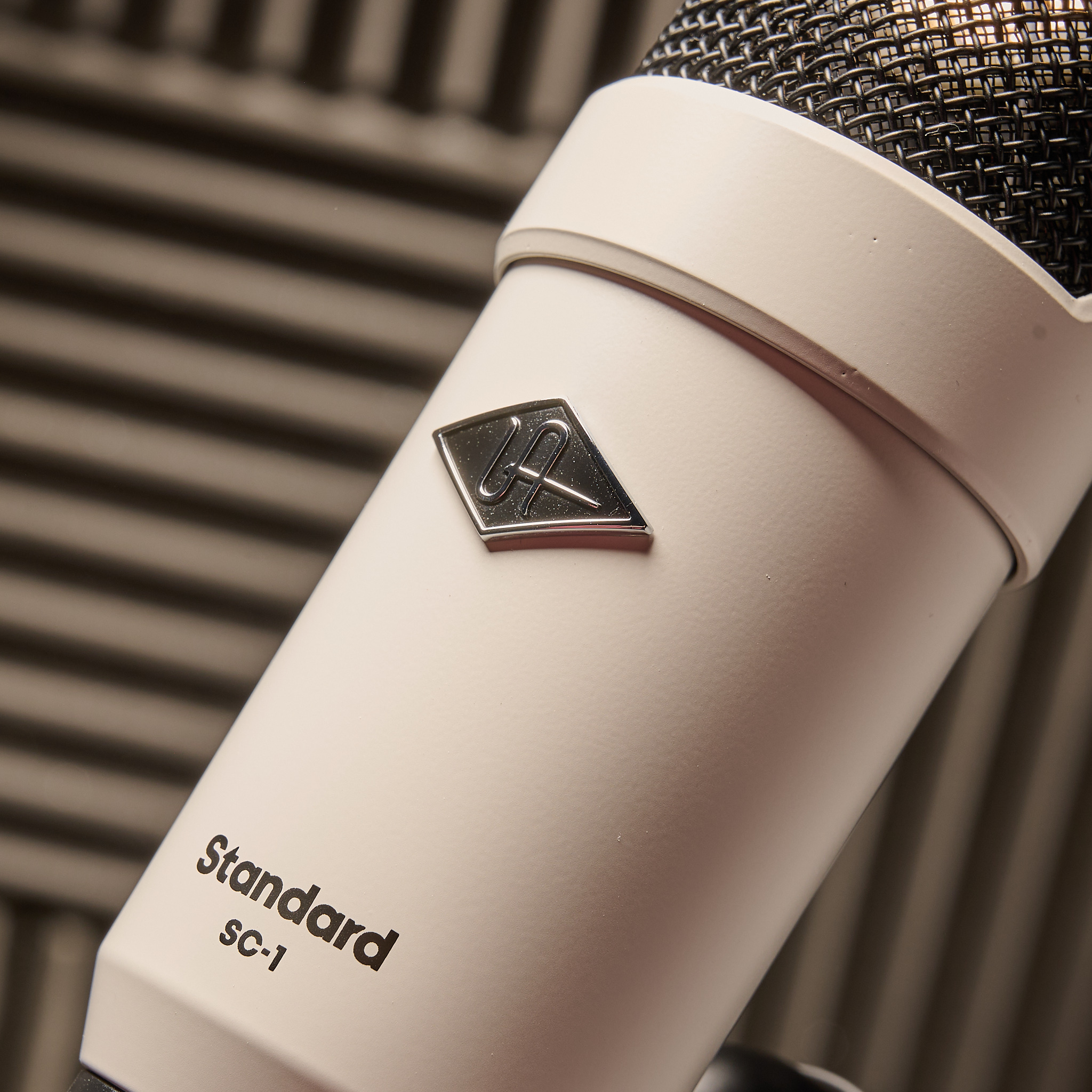
Verdict
The Universal Audio SC-1 is a commendable addition to any recording setup, offering a blend of solid standalone performance and the added versatility of microphone modelling through the Hemisphere plugin. Its robust construction, low self-noise, and ability to emulate a range of classic microphones make it a valuable asset for musicians, engineers, and content creators seeking flexibility without compromising on sound quality. While the lack of on-body controls and the necessity for additional accessories like a shock mount may require some adaptation, the SC-1's overall performance and feature set provide substantial value, particularly for those looking to expand their tonal palette without investing in multiple microphones.
Hands-on demos
Universal Audio
Alternatives
This is a very well thought-through system; from design to delivery, Slate Digital has considered every aspect of how to make this work and it has succeeded.
Read the Slate Digital VMS ML-1 review
The Sphere LX would be considered as the next one up from the Standard mics in UA's mic-modelling range, and at just over £800, it's quite a jump from the SC-1.
Read the Universal Audio Sphere LX review
Based on the K47 capsule of the classic U47 FET, Warm Audio's offering is excellent value at under £300.
Specifications
Key features | Type: Large-diaphragm condenser microphone. Polar Pattern: Cardioid. Frequency Response: 20Hz – 20kHz. Sensitivity: -38 dBv/Pa. Impedance: 100 ohms. Self-Noise: 12 dB(A). Max SPL: 145dB. Integration: UA Hemisphere Mic Modeling Plugin. |
Contact |
Chris Corfield is a journalist with over 12 years of experience writing for some of the music world's biggest brands including Orange Amplification, MusicRadar, Guitar World, Total Guitar and Dawsons Music. Chris loves getting nerdy about everything from guitar and bass gear, to synths, microphones, DJ gear and music production hardware.
You must confirm your public display name before commenting
Please logout and then login again, you will then be prompted to enter your display name.
